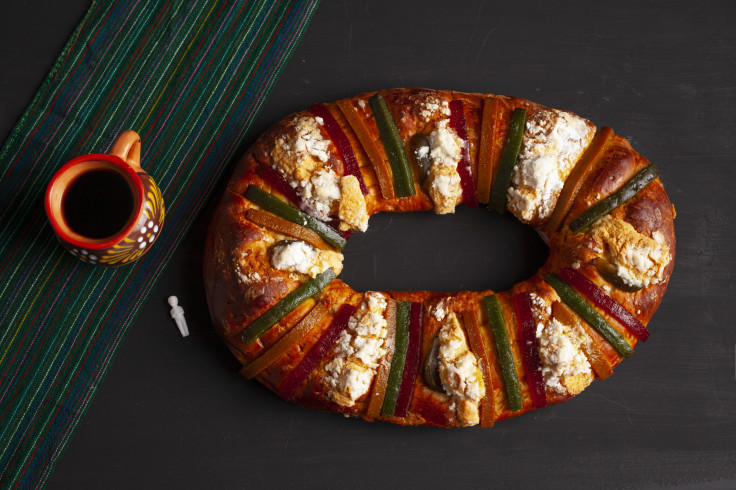
The 'Rosca de Reyes' holds a special place in the heart of the 'Día de los Reyes Magos' or the 'Three Wise Men' celebration, carrying a unique significance in Latino households in the United States. Among Mexicans, it's not uncommon for someone to be in charge of preparing tamales during this festive time either.
Celebrated on January 6, 'Día de los Reyes' involves children leaving grass and water for the tired camels of the three wise men—Melchior, Caspar, and Balthazar—who are expected to arrive with gifts. In the following morning, the kids discover the gifts and gather with their family to share a feast or simply enjoy the special treat of the holiday: the 'Rosca de Reyes.'
The 'Rosca de Reyes' is a sweet, circular bread, similar to 'Pan Dulce,' adorned with candied fruits, symbolizing the crown of the three wise men. It typically comes in an oval shape to represent a crown, but can also be rectangular. Candied figs and cherries symbolize the crown jewels, and some may have fillings inside, such as whipped cream or pastry cream, guava, or 'cajeta' (caramel made with goat milk).
In a well-known tradition, a dry broad bean is placed inside the 'Rosca de Reyes' to symbolize the baby Jesus. This bean was later replaced by a porcelain doll and, in modern times, is commonly a heat-resistant plastic figurine. Bakers follow varying methods; some integrate the doll into the dough before baking, while others do so after the baking process.
What happens when you find the doll in the 'Rosca de Reyes'?
According to the original tradition, the person who gets the slice with the bean would become the godfather to a child in the household. It is custom that in Mexican households the person who finds it is responsible for preparing or paying for tamales for 'el Día de la Candelaria' or Candlemas Day, which this year will take place on February 2.
What is the reason for this? The National Institute of Anthropology and History (INAH) in Mexico explains that tamales used to be linked to the agricultural cycle. They were prepared to seek blessings for favorable harvests and abundant rain from the gods. As part of the evangelization process, ceremonies involving the preparation and consumption of tamales in February were adapted to unify them with the celebration of 'Día de la Candelaria'.
What is 'Día de Los Reyes'?
'Día de Los Reyes' is celebrated in Spanish-speaking countries like Mexico and Spain, as well as in other countries in Latin America, the Caribbean, France, Poland, and by some Latinos in the United States, especially Puerto Rico.
It commemorates the day when the three wise men, who were strangers to each other, arrived in the city of Belén guided by a star, bringing offerings of gold, frankincense, and myrrh for baby Jesus.
© 2025 Latin Times. All rights reserved. Do not reproduce without permission.





